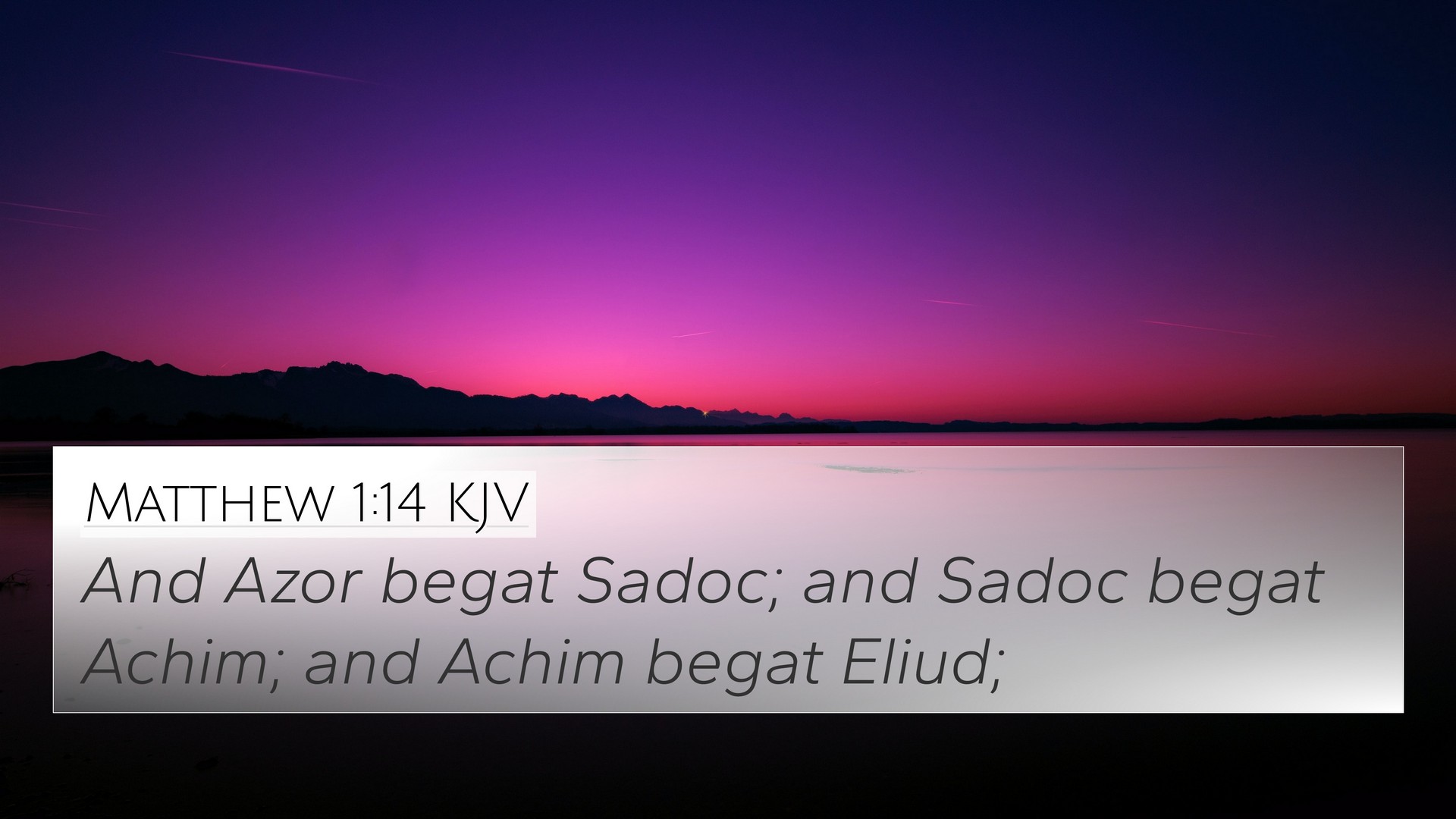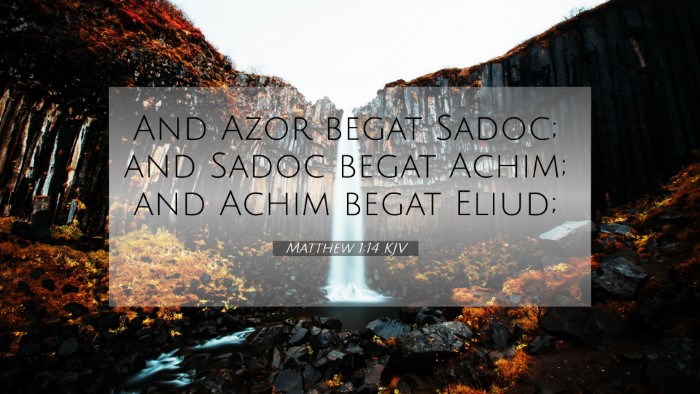Understanding Matthew 1:14
Verse: Matthew 1:14 - "And Azor begat Sadoc; and Sadoc begat Achim; and Achim begat Elihud;"
Summary of Meaning
This verse presents part of the genealogy of Jesus Christ, connecting His lineage back through the patriarchs. Genealogies in the Bible serve multiple purposes, including establishing a legal right to the throne, fulfilling prophecies regarding the Messiah, and demonstrating God's faithfulness across generations.
Insights from Commentaries
- Matthew Henry: Henry emphasizes the importance of genealogies, showing that Jesus has legitimate descent from Abraham through David. This connection highlights God's covenant faithfulness and His plan for redemption, evident from the very beginning.
- Albert Barnes: Barnes notes that each name in the genealogy represents a specific historical connection, underscoring the importance of each generation in the unfolding of God's plan. He also hints at the challenges faced by many in this lineage, thus showcasing God's mercy and grace in the midst of human frailty.
- Adam Clarke: Clarke discusses how genealogical records reinforce the idea of Jesus' authority and rightful position as the Messiah. He addresses the continuity in the line, even through difficult periods in Israel’s history, thereby demonstrating God's sovereign will in preserving a faithful remnant.
Cross-References
Matthew 1:14 can be cross-referenced with several other biblical texts to shed further light on its significance:
- Genesis 49:10: Prophetic declaration concerning the lineage of Judah, affirming the royal line.
- Isaiah 11:1: An indication of the root of Jesse, linking to the lineage through David.
- Jeremiah 23:5: A prophecy regarding a righteous branch from David's line.
- Luke 3:34: Another genealogy of Jesus that includes some of the same names, enhancing biblical linkage.
- Matthew 1:12: Continuous ties within the genealogy that affirm God's plan through successive generations.
- Romans 1:3: References Jesus's descent from David, underlining His qualifications as the Messiah.
- Hebrews 7:14: Highlights Jesus's priesthood stemming from His lineage, signifying the dual roles as priest and king.
Genealogy and Theological Significance
The genealogical lists serve as critical theological markers in Scripture. They offer a means to understand God's overarching plan from creation through Israel to Christ:
- Biblical Continuity: The continuity of God's promises across generations is evident.
- Jesus as Fulfillment: The purpose of these genealogies is to position Jesus as the fulfillment of Old Testament prophecies.
- The Role of Faithful Figures: Each individual in the genealogy represents unique stories of faith, highlighting human participation in divine purpose.
Tools for Cross-Referencing
To facilitate deeper study and understanding of such connections, various tools can be utilized:
- Bible Concordance: This reference tool allows for the exploration of keywords and themes.
- Cross-Reference Bible Study: Engaging in comparative study methods fortify understanding.
- Bible Reference Resources: Guides and resources can provide a structured approach to study.
Connecting Themes in Scripture
Examining the themes in Matthew 1:14 in light of others helps draw meaningful connections:
- Redemption: Jesus's lineage shows God's ineffable plan for redemption through flawed humanity.
- Grace: The inclusion of imperfect individuals in Christ's genealogy speaks volumes about divine grace.
- Covenant Faithfulness: The consistent recording of lineage reminds readers of God's unwavering covenantal promises.
Conclusion
Matthew 1:14, while seemingly a simple record of names, encapsulates a rich tapestry of theological significance. The insights gathered from various public domain commentaries affirm the critical role of genealogies in Scripture as markers of God’s faithfulness, underscoring the profound connections within the biblical narrative.


